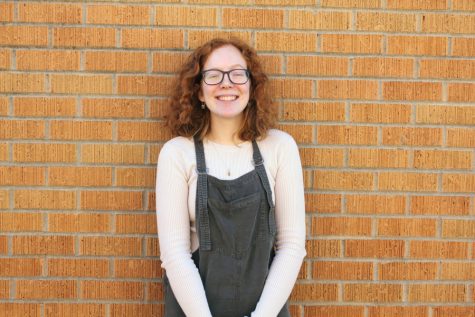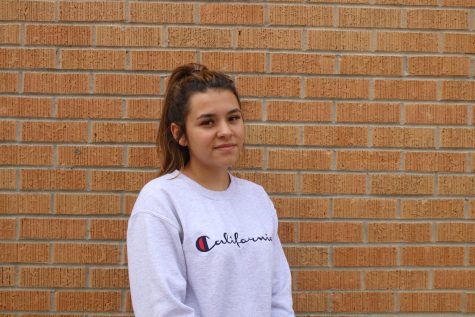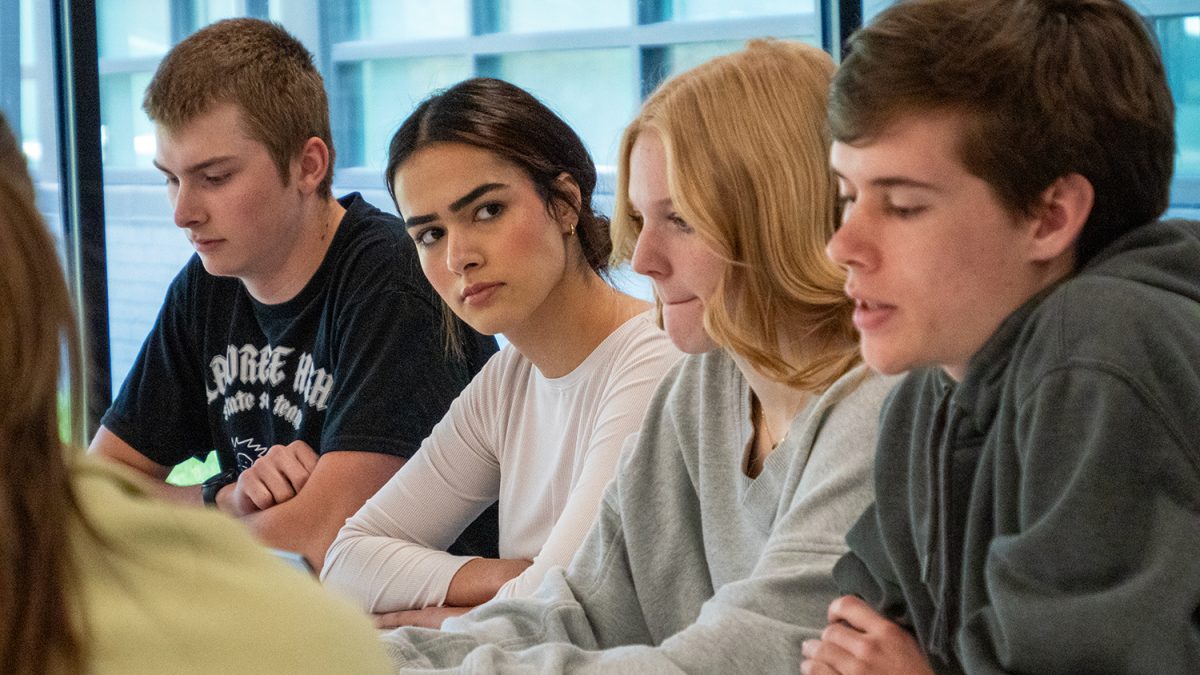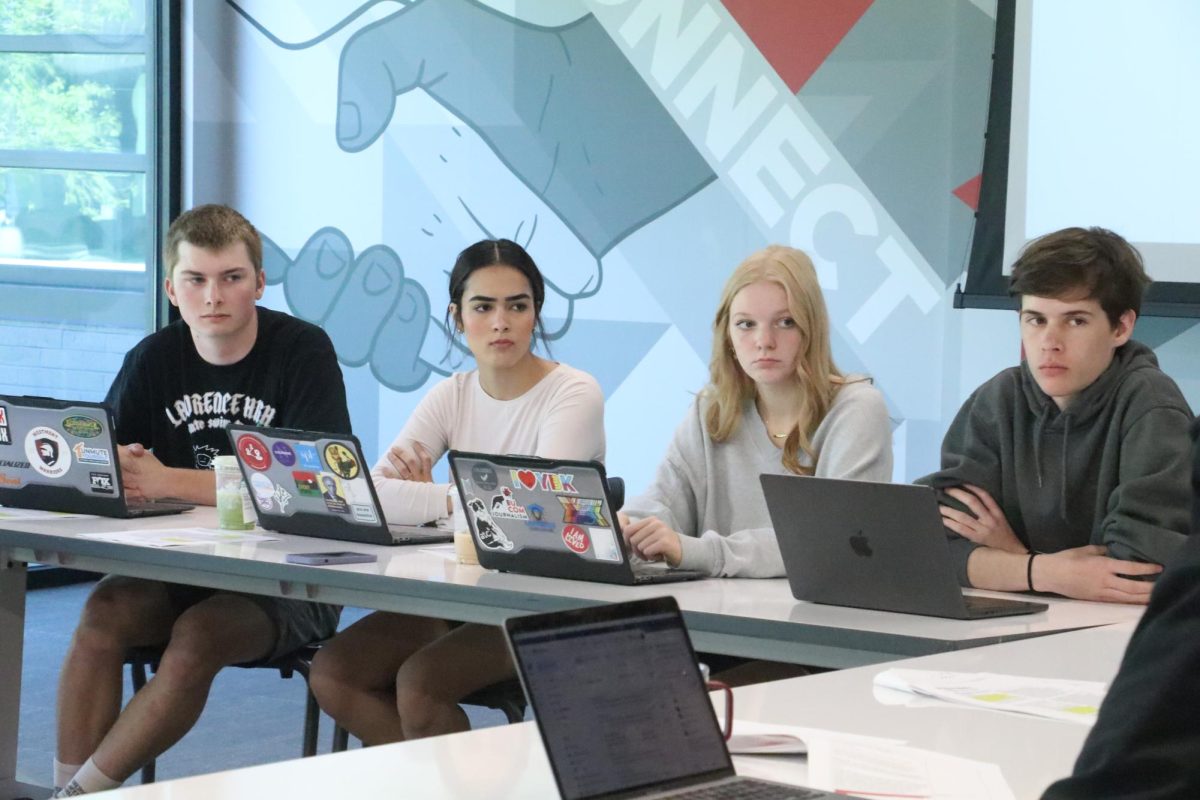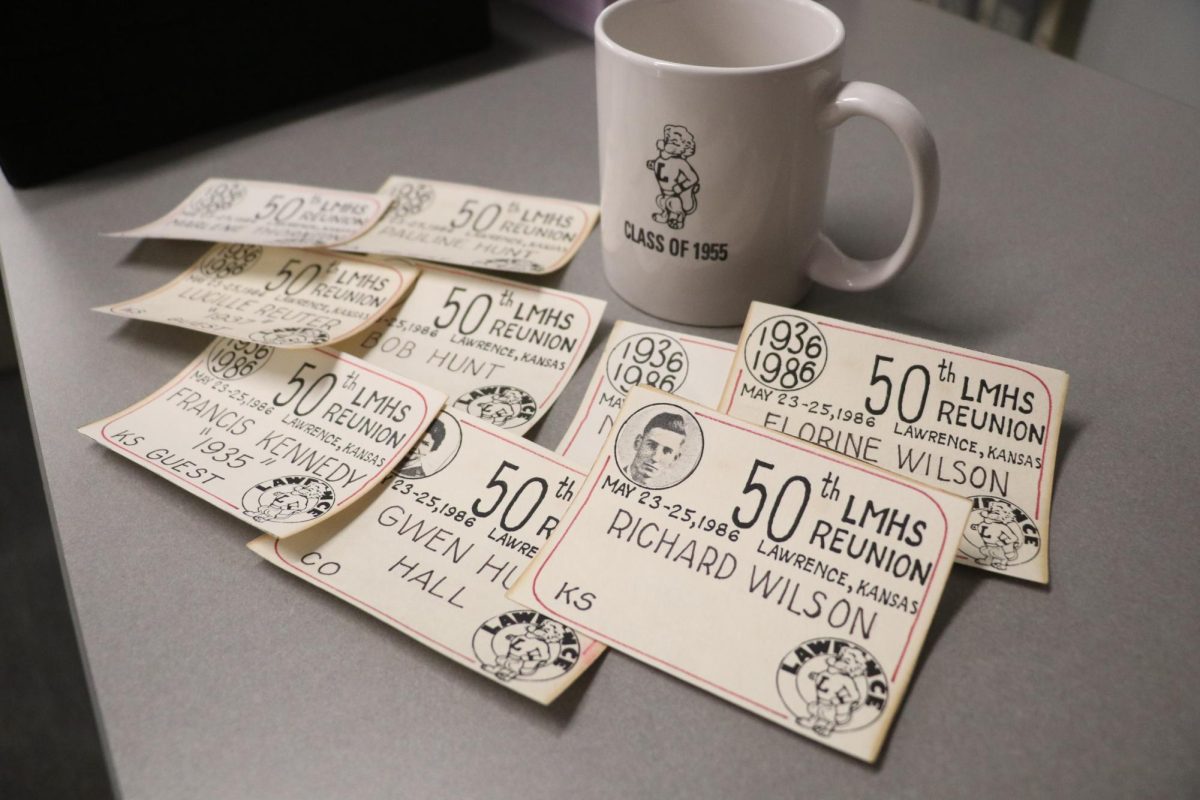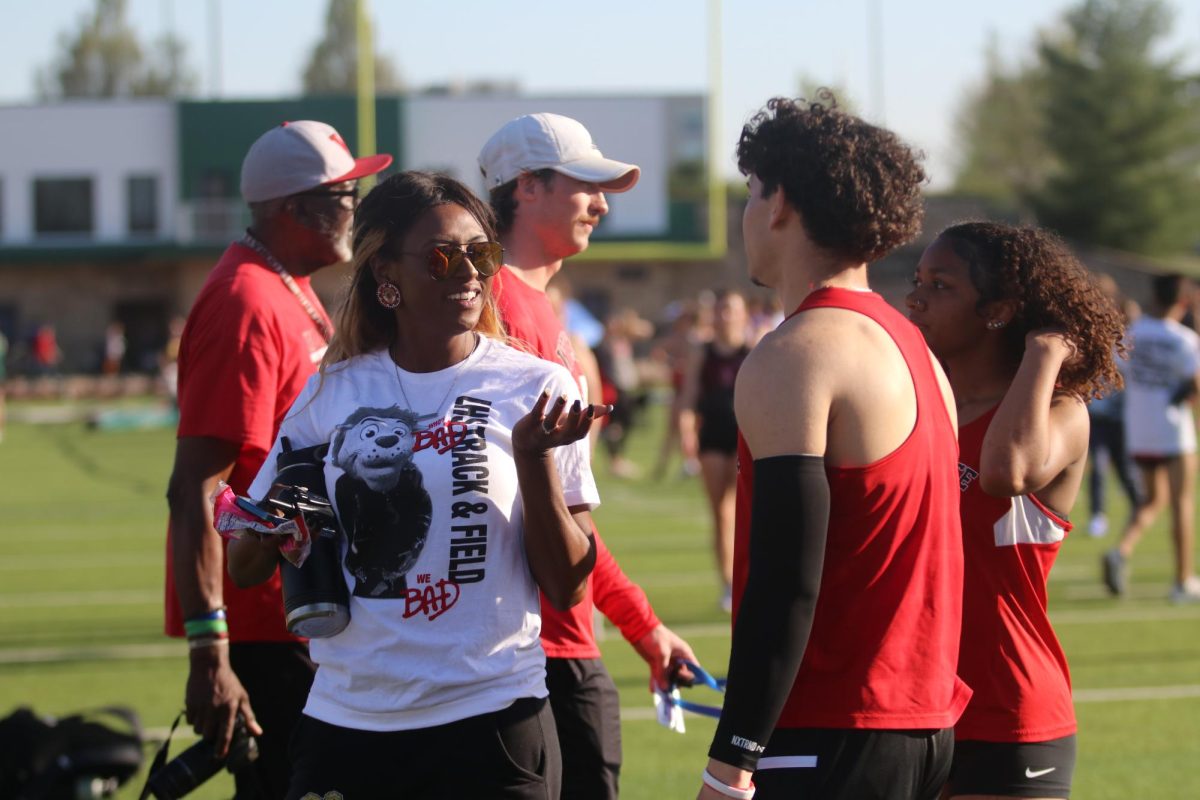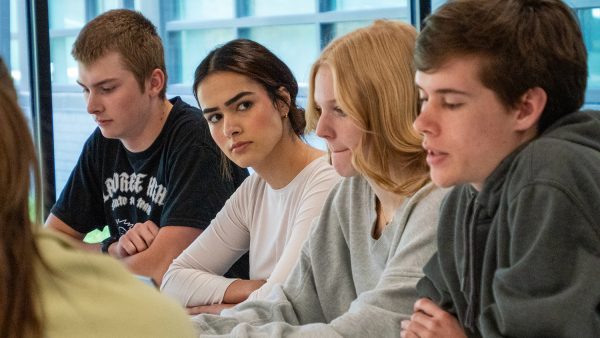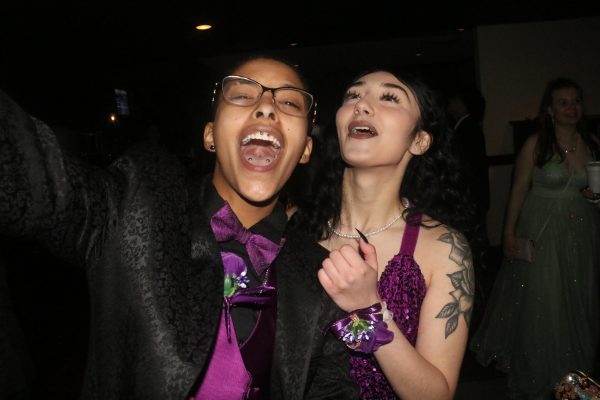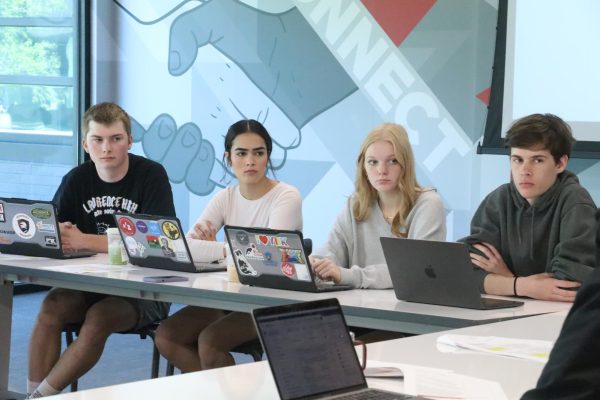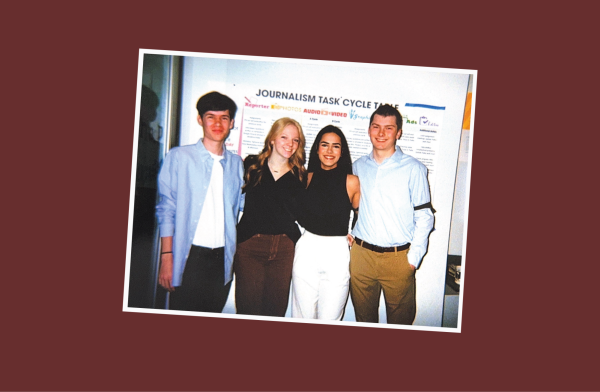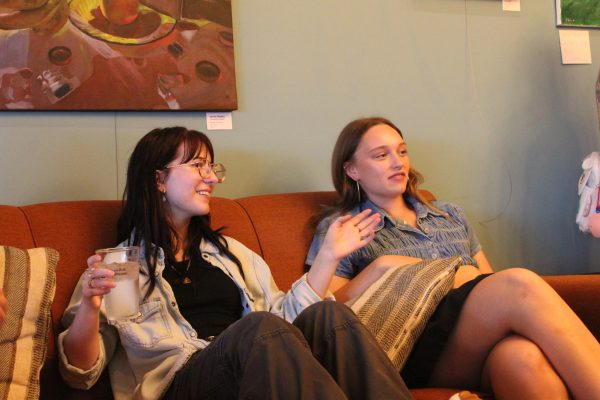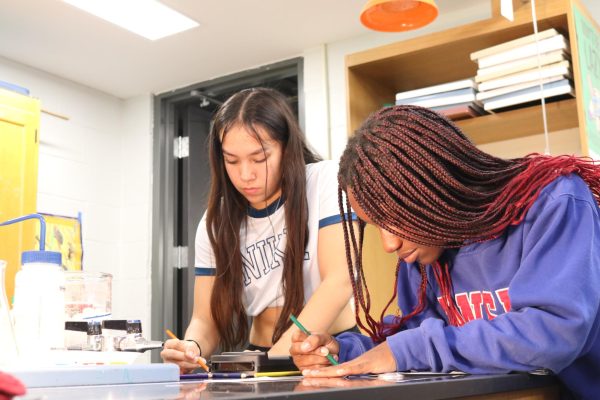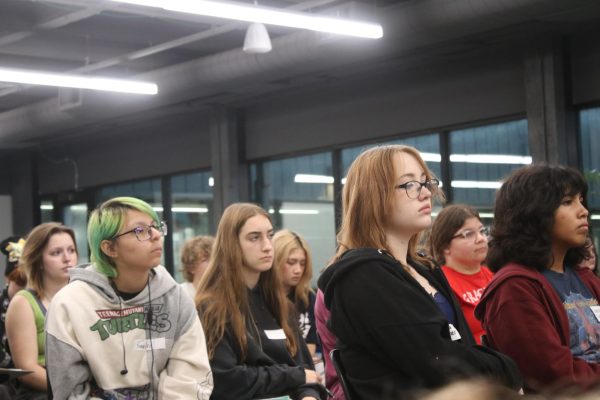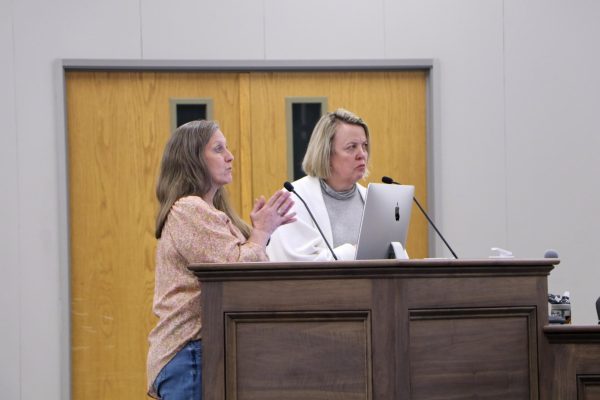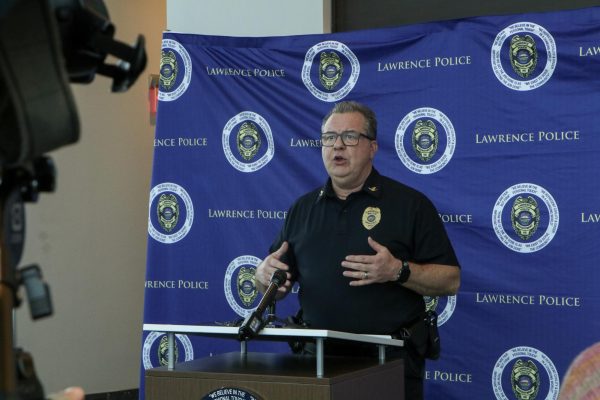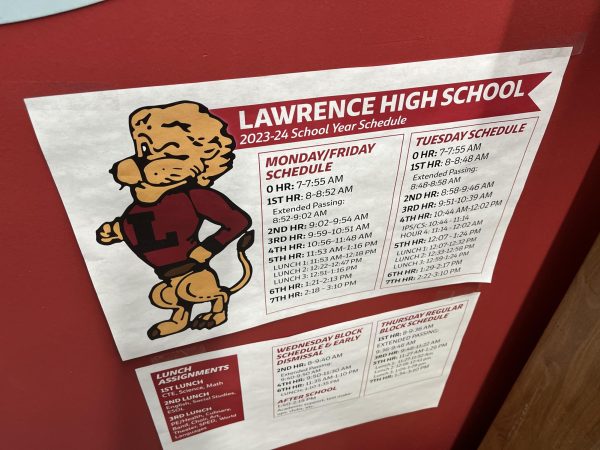Extracurriculars and electives donate to Adopt-A-Family for the holiday season
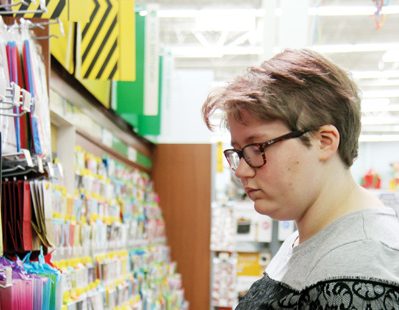
Sophomore Aubrey Fischer and junior Mikayla Kaufman shop for their adopted family at Target. Last year, the Adopt-A-Family program helped about 780 low-income families in the Kansas City area. “Helping people makes me happy, and I’m glad to be a part of something that can leave a family with one less thing to worry about,” Kaufman said. “Also, thinking about the kids’ reaction to getting the gifts they hoped for makes it special.”
December 17, 2018
Without the efforts of extracurriculars and elective classes, Lawrence High wouldn’t have its reputation for raising large amounts of money for Adopt-a-Family.
Seven of the 30 families adopted this year were claimed by extracurriculars or electives that were not second-hour classes.
Like these classes, a list of the family requests are given to the teacher, who communicates with students about how much money they need to raise. Then, they go shopping for the gifts and outfits their families need.
“It’s just a really fun process because we get to go to Target and go shop,” senior Symphonic Orchestra member Madeline Johnson said. “It’s really awesome because you’re helping a family out and thinking of someone else.”
Because the groups meet less often or collectively choose to donate, every person involved has a responsibility.
“Clubs don’t meet every day or four times a week,” senior Pre-Med Club board member Doha Maaty said. “We don’t see each other, so we have to communicate through chats and the teacher. And so, with a class, it’s easier because you see those people every single day and you can remind them. In a club it’s more like the student leaders pushing for this.”
The teachers help the process along by incentivizing students to contribute. Some, like woodshop teacher Jay Hundley and other career and technical education teachers, implement rewards systems involving food. He gives students a donut if they donate at least $2.
“We buy anywhere from two to three dozen donuts every Wednesday, which we call ‘Adopt-a-Donut,’ and [the students] pay $2. They get a donut, and that’s how we earn our money for our families,” he said. “Some days, when we get close, we have ‘Monday Munchers,’ so we go to Munchers and get some stuff.”
Their rewards help to motivate students.
“It’s easier for people to donate if they’re getting something back, and usually most teenagers will buy a donut,” Hundley said. “And I realize $2 is an expensive donut, but we just tell them it’s going to our Adopt-a-Family. It’s for a good cause.”
Sometimes the fundraising becomes so effective that students begin reminding other students to donate. In orchestra, the longstanding tradition of earning a dessert after each benchmark is met is always a big hit.
“We work hard to bring in money because we want [brownies],” Johnson said. “I typically put in more [money] because I don’t want people to harass me.”
The basketball team, which adopts multiple families at a time, varies its form of fundraising from year to year.
“Sometimes we’ll have an online fundraiser, but I think this year we might be having like a pancake and biscuits and gravy fundraiser, so that should be fun,” senior basketball player Garrett Hart said.
Students in these extracurriculars choose to donate because, no matter the size of the family or the rewards they’ll receive, everyone enjoys giving back.
“It’s nice to help people in need in our community,” Hart said. “Because a lot of times you kind of take it for granted, the things you have and you’re able to purchase.”




